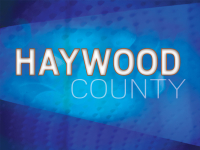Change in business fee structure a windfall for Waynesville
A new formula for business license fees will mean a six-fold increase in collections for the town of Waynesville this fiscal year, bringing in a projected $128,000 compared to $20,000 last year.
The new rate structure is based on a business’s net revenue. Businesses that bring in more money now have to pay more for their annual business license, compared to the old system when businesses paid the same amount, no matter their sales volume.
“Before Walmart would be paying $25 and a mom and pop store would be paying the same thing. Now Walmart is going to be paying more,” explained James Robertson, the Waynesville tax collector. “I feel like it puts everybody on a more level playing field.”
Here’s how the new business license fees work. There’s a flat $25 annual rate up to $1 million in revenue. Once a business reaches $1 million in revenue, it has to pay an additional 50 cents for every $1,000 in sales.
It comes out to $500 for every $1 million in revenue over and above that first $1 million.
Related Items
Historically, businesses were charged a flat rate according to the type of business it was engaged in. The fee varied among types of businesses in different categories. But within any given category, all businesses paid the same flat rate.
Now, business must divulge their financials to the town in order for the town to calculate what they owe. Businesses usually provide their tax filing from the past year as documentation.
But that taxpayer data is kept strictly confidential, said Robertson.
Robertson said Waynesville has not gotten much pushback over the new fee structure.
“Businesses realize it is just the cost of doing business,” said Robertson, who’s the president of the N.C. Association of Business License Officials.
One business to complain about the new formula has refused to pay its business license fee, at least so far, according to Town Manager Marcy Onieal. But the deadline to pay up before officially being labeled “delinquent” hasn’t yet passed. The town can’t say which business complained, citing that taxpayer’s confidentiality.
Most larger cities have already switched to a revenue-based formula. But smaller towns, especially those in the mountains, have been slower to adopt the new structure for calculating business license fees.
Sylva was the first town west of Asheville to do so two years ago.
Sylva has a more conservative rate structure than Waynesville. A business license fee is $50, with an additional 35 cents for every $1,000 in sales over and above $3 million.
The initial fee is higher than Waynesville’s — $50 in Sylva instead of $25 in Waynesville. But the threshold for when a business has to kick in an additional percentage based on its gross revenue is higher — $3 million in Sylva compared to $1 million in Waynesville.
“Our board didn’t want to hurt local businesses so they set the gross receipts as being over $3 million,” said Lynn Bryant, Sylva’s finance officer.
Like in Waynesville, the new business license formula proved lucrative for the town of Sylva as well. The town increased its business license revenue by about $60,000 a year.
Despite the obvious benefit to town coffers, Sylva and Waynesville remain two of the only towns in the region that have switched to the new formula. In Franklin, leaders talked about it but never made a decision.
Waynesville has 645 active businesses on its books. But not all of those are still operating. Some have gone out of business since last year. And some are what Robertson calls “fly-by-nighters.”
“You might have a contractor come in and get a business permit to build one house but you never hear from them again,” Robertson said.









